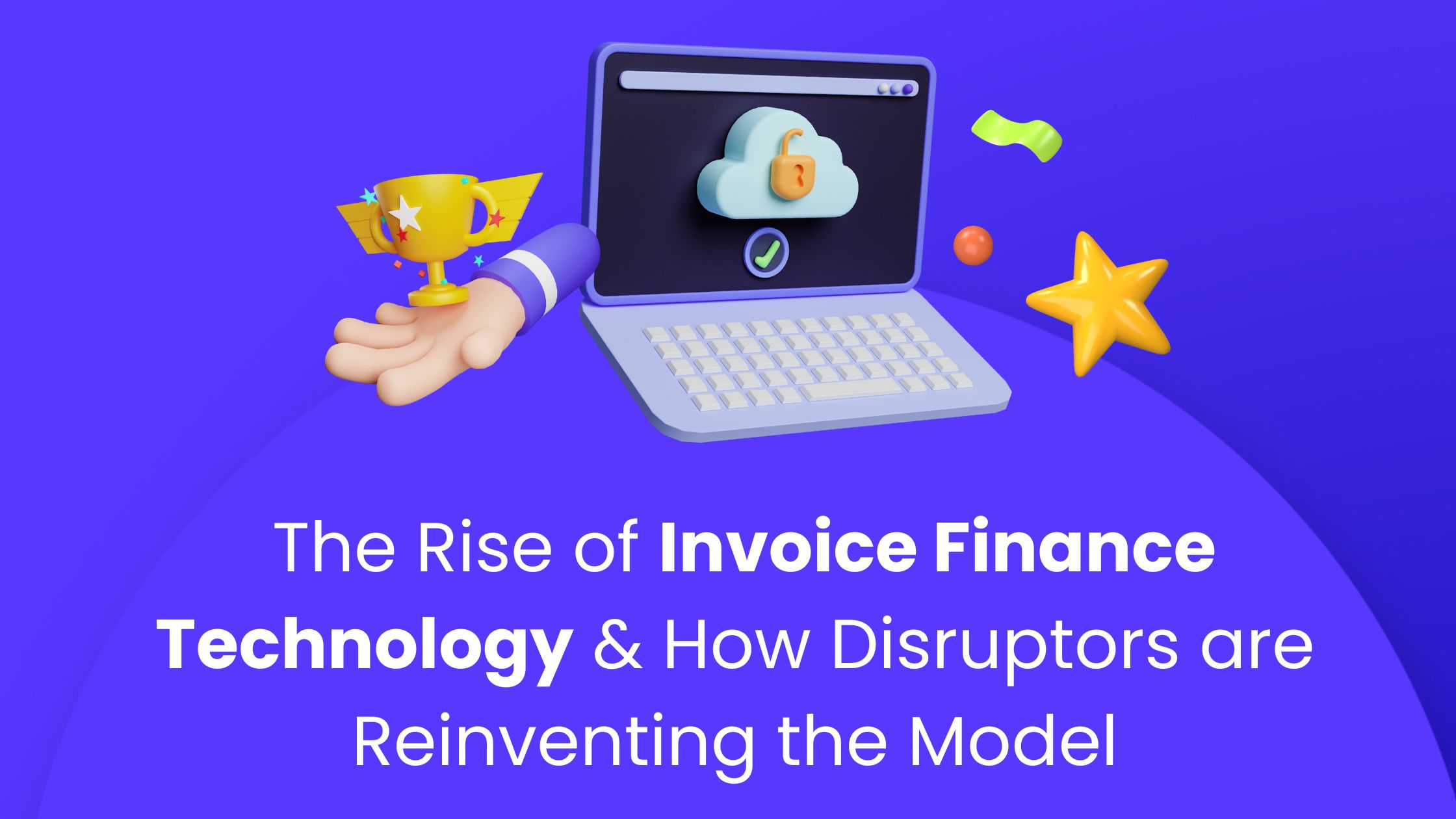The Rise of Invoice Finance Technology & How Disruptors are Reinventing the Model

When it comes to invoice finance, it’s not uncommon for business owners to think “invoice finance is old, dusty, expensive and hard to manage. Might as well talk to the bank and get a loan, or just increase my overdraft”. Well, up until a couple of years ago, before the advent of invoice finance technology, that would have been a reasonable position to take.
For a small business without a finance function of more than one of the directors and a bookkeeper, the idea of managing a whole turnover agreement was rather daunting. Also, for companies below a certain size, producing invoices of below a particular value, invoice finance was simply not an option because the cost of serving those small businesses by funding small invoices was just too high .
However, invoice finance has evolved over the years, and thanks to innovations in technology, invoice finance is a lot more accessible to smaller businesses that can really benefit from the proposition.
How the rise of invoice finance technology has disrupted the model for businesses
There have been two invoice finance technology innovations that have shaken up the market; API technology, which has been around for a while, and cloud accounting, which is still reasonably new. Below, we take a look at how these innovations work and how they’ve enabled market disruptors to reinvent the invoice finance model.
Leveraging API connectivity in invoice finance technology
API stands for ‘Application Programming Interface’ – simply put, it’s a way for two pieces of software to communicate by using requests and responses. As API technology becomes mature, more and more providers of information are enabling access to their data via APIs.
Giving a trusted partner access to certain data via API connections is hugely powerful and has turned invoice finance on its head. In the ‘old days’ (which were not that long ago!) each customer would need to submit a report at month’s end reconciling all invoice finance activity to the invoice finance provider. Not only was this an administrative burden on the part of the customer, but for the invoice finance provider, mistakes or miscalculations might only be picked up weeks after they had occurred.
APIs make this data more easily accessible, allowing customers and invoice finance providers to pick up on reconciliation issues much more quickly than before. And paired with cloud accounting, invoice finance reconciliation becomes an easier, ongoing process – not a looming headache awaiting at month’s end.
Cloud accounting: Enabling real-time invoice finance management
The second invoice finance technology to revolutionise the space is cloud accounting – the ability to share a company’s live ledger with colleagues, trusted advisors (such as the company accountants) and third parties in real time. Rather than updating accounts at each month’s end, if properly maintained, anyone with access would be able to see the current financial position of the company at any one time. From the perspective of providing invoice finance, this has offered a powerful opportunity: to know exactly when invoices and credit notes have been raised, and when they have been marked as paid.
With connectivity in real-time, there is no longer the burden on the customer to provide data (it can be requested through the API) and the fact that it is real-time means that decisions can be made instantly, and mistakes can be corrected quickly.

How providers like Hydr are embracing invoice finance technology
For the first time, there is the possibility to create a signup process that doesn’t require huge amounts of information to be collated and submitted to a potential provider, only to be told a few days (or weeks) later that the company wasn’t eligible: all that company should have to do is give access to their data to enable a potential invoice finance partner to conduct their due diligence.
And that is exactly what we have done at Hydr. Leveraging the connectivity that APIs provide, our proprietary technology has enabled us to offer what we believe to be a market-leading proposition. Our platform can fund 100% of the value of your invoices for a fee that is fixed and fairly priced. Fixed means just that – it doesn’t change, even if your customer is a little late in making payment. Furthermore, the signup process is paperless and should take no more than 15 minutes; when you are signing up, a lot of what you are doing is giving our platform read-only access to certain data (such as your cloud accounting) that enables our algorithms to figure out whether or not we can support your company – a process that takes minutes, not days!
Summary: Invoice finance technology makes invoice finance easier for businesses
Adoption of these technologies is not something to be feared. In other blogs, we have written extensively about the power of cloud accounting, and the ability it offers to let a group of trusted people see your ledger in real-time and offer advice when it’s needed (not months later). But even more powerful than this, it’s the access to a whole set of products and services (not just invoice finance) that can have a transformational impact on how you work and your company’s fortunes.
These invoice finance technologies are here to stay, which is something we at Hydr celebrate! We love being able to offer our proposition to the market, helping as many small businesses as possible realise their potential through better working capital.
For more information on how cloud accounting can supercharge your finance function, download our white paper now, or get in touch with us to learn more about our invoice finance platform.

